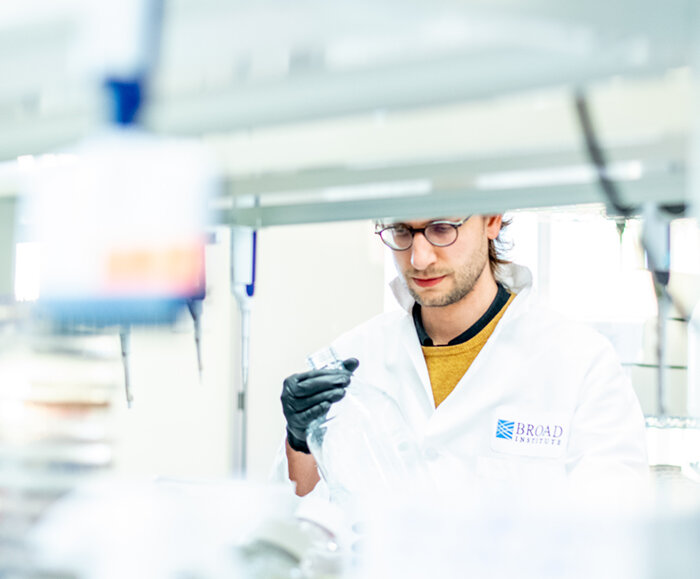Research
We are thinking about a number of problems, including new approaches for precision gene editing, delivery of molecular and genetic cargo, discovery of novel programmable systems, and engineering of the immune system to develop the next generation of therapeutics.
Precision gene editing
Although we typically talk about "gene editing", in reality, we mostly do gene deleting. Our ability to precisely integrate new stretches of DNA is limited by several parameters. Current methods for integration rely on endogenous cell machinery to carry out homology-directed repair (HDR) using an exogenous DNA template. HDR is inefficient at best, however, and inactive in post-mitotic cells. One approach we have taken to address this challenge is to develop precision base editors, which can convert a single nucleotide to a different nucleotide. We reported last year RNA Editing for Precise A-to-I Replacement (REPAIR). We are extending this work to expand the range of base substitutions that can be achieved and exploring the efficacy of this strategy to ameliorate phenotypes caused by point mutations. We are also working on developing new systems that can precisely incorporate or delete stretches of DNA.
delivery
Delivery of molecular and cellular tools is perhaps the biggest barrier to widespread adoption of these treatments. Just as we will need to deploy a range of tools to effectively treat various diseases, we will need multiple delivery modes to ensure molecular tools reach the correct tissues and cell types. Ideally, these delivery systems should be adaptable to work with different tools. We are pursuing three approaches toward this goal. First, we are engineering adeno-associated viral (AAV) vectors and related viral capsids to try and create packaging systems with increased cargo capacity. Second, we are exploring the properties of exosomes, natural intercellular delivery vehicles, to understand how these vesicles are packaged and transduced with an eye toward harnessing them for delivery of molecular tools. Third, we are focusing on delivery of cells to the brain via engraftment of engineered cells.
new technologies for reading & writing biology
Significant advances in molecular biology will require new technologies for the precise control and high-resolution observation of cellular processes. We previously demonstrated a new method for single-nuclei sequencing, which can efficiently capture transcriptomic data from tissues that are inaccessible to other single-cell methods, such as neurons and frozen tissue. More recently, we have been working on methods for optical pooled screening, expanding the range of phenotypes that can be combined with high-throughput forward genetic approaches, and methods to detect protein dynamics through DNA sequencing. Another on-going project involves a novel form of capturing spatial information in DNA sequences. Together, these technologies will help accelerate research into a range of cellular and molecular processes.
Exploring natural diversity
Building on our work to discover CRISPR-Cas systems with novel properties, we are continuing in this vein to search for other uncharacterized adaptive immune systems that can be reprogrammed. Novel adaptive immune systems may target proteins, carbohydrates, or metabolites, offering the possibility of the development of new manipulation modalities. We are integrating bioinformatics discovery with molecular and biochemical techniques to elucidate the mechanism of the enzymes and systems we identify computationally. Going forward, we will engineer these systems to develop novel technologies.



